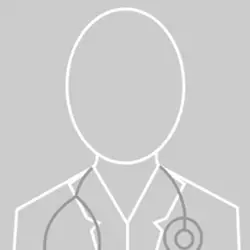Heat stroke
"Heat stroke treatment is a vital emergency, since its mortality is lower if the patient is cooled down as soon as possible".
DR. JAVIER NICOLÁS GARCÍA GONZÁLEZ
SPECIALIST. INTERNAL MEDICINE DEPARTMENT

What is heat stroke?
Heat stroke is an uncontrolled rise in temperature due to a failure of the thermoregulatory mechanisms, and can lead, if not treated early and properly, to severe multi-organ failure and death.
In this case, the patient has a fever, almost always higher than 39-40°C, altered level of consciousness, which can reach deep coma, and the skin is hot and dry, unlike in heat collapse.
It can be caused by an excessive increase in external temperature, which occurs especially in summers with high and sustained temperatures. It can also occur as a result of intense or prolonged physical exercise in hot and humid conditions.

Symptoms of heat stroke
Heat stroke presents with a variety of symptoms that can vary in intensity. The most common include:
High body temperature
Fever is one of the main signs of heat stroke, it can exceed 39-40ºC. Unlike other heat disorders, in heat stroke, the temperature is higher and more difficult to control.
Altered level of consciousness
This is one of the most serious symptoms. In the early stages, it may present as confusion, disorientation, drowsiness, etc. In more advanced cases, the person may go into a coma.
Hot and dry skin
Unlike heat exhaustion, in heat stroke the skin is dry, hot and red because the sweating mechanisms fail. This makes it difficult to dissipate body heat, which increases the risk of organ damage.
Muscle cramps
These are common in the early stages of heat stress. Heat cramps are an early manifestation in people who have been physically active in high heat. Lack of hydration and changes in electrolytes may be the cause of heat cramps.
Generalised weakness
People affected by heat stress often feel weak, fatigued and disoriented. Muscle weakness may become more pronounced as the disease progresses, even making it difficult to move.
Headache
This is a common symptom associated with heat stress, especially in the early stages. The pain may be severe and increase as body temperature and dehydration rise.
Dizziness, nausea and vomiting
The person may feel dizzy, have difficulty standing, and experience nausea which, if untreated, may progress to vomiting. These symptoms are the result of dehydration and altered fluid and electrolyte balance in the body.
Cardiovascular and respiratory disturbances
The body tries to compensate for the rise in temperature with a strong and irregular pulse, accompanied by rapid and noisy breathing. These responses may indicate a failure of thermoregulatory mechanisms.
Do you have any of these symptoms?
If you suspect that you have any of the above symptoms,
you should consult a medical specialist for a diagnosis.
What are the causes of heat stroke?
Environmental causes
- Ambient temperature higher than body temperature.
- High atmospheric humidity.
- Radiant heat overload (metal buildings, automobiles).
Endogenous causes
- Fever
- Muscle strain from work or sport
- Malignant hyperthermia.
There are many other factors that favour the development of heat stroke. It is more common in people with poorer regulatory mechanisms, such as children and the elderly. It is also more common in people who are debilitated, dehydrated or obese.
Finally, the coexistence of other diseases (such as diabetes, hyperthyroidism, neurological, cardiovascular, pulmonary or renal diseases, etc.), alcoholism and taking different types of medication also increase the risk of heat stroke.
Prognosis of heat stress
Despite adequate treatment, mortality from heat stroke remains high, and survivors may have various neurological and other sequelae.
The disease has a worse prognosis in older people, if there is severe neurological involvement, signs of multi-organ damage, or if cooling is delayed by more than one hour.
Therefore, the best strategy in this disease is prevention. Some of the basic tips that help prevent heat damage in all its forms are:
- Avoid exposure to the sun in the central hours of the day.
- Maintain good hydration throughout the day.
- Drink before, during and after physical exercise.
- Avoid drinking alcoholic beverages.
- Do not overdress children in hot weather.
- Adequate ventilation.
How heat stroke is treated
The treatment of heat stroke is a vital emergency, as mortality is lower if the patient is cooled as soon as possible. It is therefore very important to diagnose the syndrome early and to suspect it in any patient with high fever and neurological alteration.
As soon as possible, the patient should be transferred to a hospital, but until then, the objective is to reduce the patient's body temperature to between 38 and 39ºC. To do this, the patient should be placed in the coolest possible place, his or her clothes should be removed and he or she should be cooled with cold water compresses.
The patient may also be immersed directly in cold or lukewarm water, but bear in mind that too rapid and excessive a contrast with the cold may constrict the blood vessels in the skin and stimulate shivering, which may delay cooling.
Once transferred, cooling should be continued and the necessary supportive measures should be taken. Therefore, the best strategy in this disease is prevention.
Frequently asked questions about heat stroke
Heat stroke and heat exhaustion are both disorders related to heat exposure, but have important differences:
Heatstroke: It is caused by prolonged exposure to the sun without proper protection. It can cause symptoms such as headache, reddening of the skin, mild fever and fatigue.
Heat stroke: This is a much more serious condition in which the body is unable to regulate its temperature. It is characterised by high fever (above 40°C), hot and dry skin, confusion, loss of consciousness and, in severe cases, multi-organ failure.
While heat stroke can be treated with hydration and rest, heat exhaustion is a medical emergency that requires immediate attention.
Heat stroke can develop in a matter of minutes or hours, depending on the ambient temperature, physical activity and the body's ability to dissipate heat.
Early symptoms include:
- Excessive sweating (in the early stages).
- Fatigue, dizziness and weakness.
- Headache and nausea.
- Confusion or difficulty concentrating.
If not treated in time, symptoms progress to high fever, hot and dry skin, convulsions, loss of consciousness and even death.
Children and the elderly are more vulnerable to heat stress because their bodies are less able to regulate temperature:
Children: Their thermoregulation system is not yet fully developed and they lose fluids more quickly. In addition, they often do not recognise the need to hydrate.
Elderly: With age, the sensation of thirst decreases, which increases the risk of dehydration. In addition, some chronic diseases or medications can affect body temperature regulation.
If a person shows signs of heat stroke, follow these steps immediately:
- Move the person to a cool, shady place. Avoid further exposure to the sun or extreme heat.
- Remove unnecessary clothing. This helps to dissipate body heat.
- Apply cool compresses or water to the skin. Use wet cloths on the forehead, neck and armpits.
- Give water in small sips. Only if conscious and able to drink without difficulty.
- Fan her with a fan or air conditioner. This will speed up the temperature drop.
- Call 911 if it does not improve within minutes. Heat stroke can be fatal if not treated in time.
Where do we treat it?
IN NAVARRA AND MADRID
The Department of Internal Medicine
of the Clínica Universidad de Navarra
Its integrative vision and polyvalence allow us to provide the best medical assistance to multipathological and multisymptomatic patients, who present a difficult diagnosis or who suffer from prevalent diseases of a hospital nature.

Why at the Clínica?
- State-of-the-art diagnostic technology.
- Quick diagnosis to start the most appropriate treatment early.
- Teamwork with the rest of the professionals in the Clinic.
IN NAVARRA AND MADRID



























